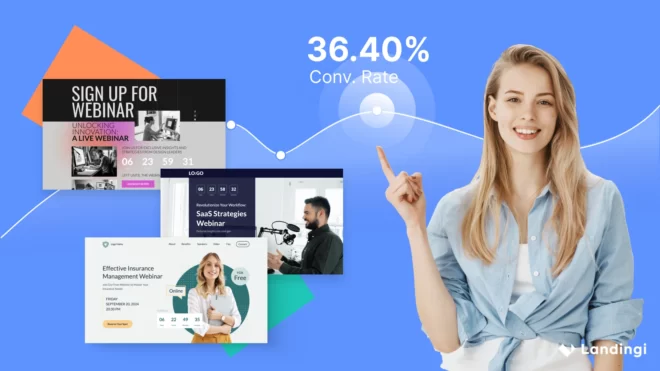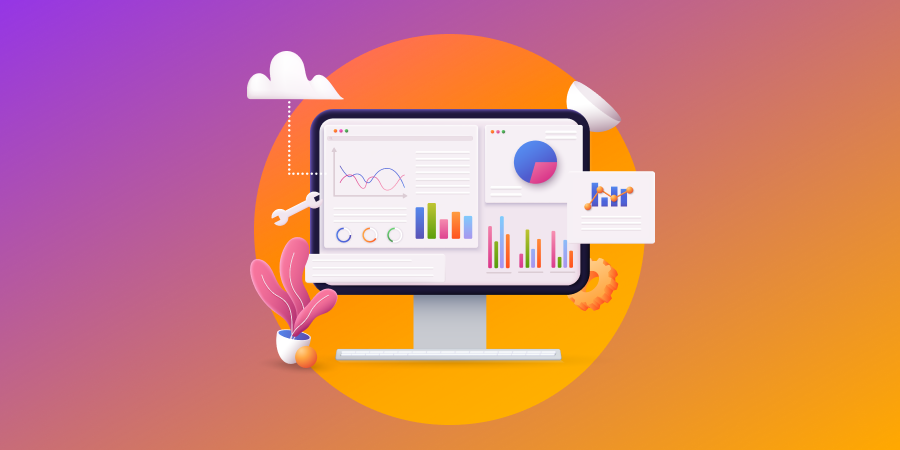Unlock the secrets to creating SEO-friendly landing pages that skyrocket engagement and conversions. Don’t miss out on this game-changer!

Image courtesy of via DALL-E 3
Table of Contents
Welcome to the world of SEO-friendly landing pages! In this exciting journey, we will explore how these special web pages can help businesses like yours boost engagement and conversions. But before we dive into the nitty-gritty details, let’s start by understanding what exactly a landing page is and why SEO matters.
What is a Landing Page?
Imagine a landing page as a welcoming doorway to a specific place on the internet, designed to catch the attention of visitors and guide them towards a particular action, like making a purchase or signing up for a newsletter. It’s like a digital storefront, showcasing the best of what you have to offer.
Why SEO Matters
SEO stands for Search Engine Optimization, which means making your website easily discoverable by search engines like Google. When you optimize your landing pages for SEO, you’re basically making them more visible to people searching for products or services you provide. It’s like planting a signpost on a busy street to attract more visitors to your store.
The Goal: Engagement and Conversions
Now, let’s talk about two magical words: engagement and conversions. Engagement refers to how well your landing page captures the interest of visitors and keeps them exploring. Conversions, on the other hand, are when visitors take the desired action, like making a purchase or subscribing. Our goal is to create landing pages that excel in both aspects, drawing people in and encouraging them to become customers.
Choosing the Right Keywords
When creating a landing page, one vital aspect to consider is selecting the right keywords. Keywords play a crucial role in helping your page appear in search engine results, driving more traffic to your site. Let’s delve into how you can choose the right keywords to enhance the visibility of your landing page.
What are Keywords?
Keywords are the specific words or phrases that people type into search engines when looking for information. These words are essential as they tell search engines what your content is about, helping them match your page with relevant search queries. Selecting the right keywords can significantly impact how well your landing page performs in search results.
Finding Popular Keywords
To find the most effective keywords for your landing page, you can use tools like Google Keyword Planner or SEMrush. These tools provide insights into the popularity and competitiveness of various keywords. Look for keywords that are relevant to your content and have a high search volume but moderate competition. This will increase the chances of your page ranking well in search results.
Using Keywords Effectively
Once you’ve identified the right keywords, it’s essential to use them strategically throughout your landing page. Incorporate your chosen keywords in the page title, headings, meta descriptions, and within the content itself. However, avoid overusing keywords, as this can be seen as spammy by search engines. Aim for a natural integration of keywords that provides value to your readers.
Crafting Compelling Headlines
A good headline is like a magnet that attracts people’s attention. It should be clear, concise, and intriguing. A headline that sparks curiosity or poses a question can make readers want to click and learn more. Remember to keep it relevant to the content on your landing page to avoid misleading visitors.
Using Keywords in Headlines
Keywords play a crucial role in making your headline visible to search engines. By including relevant keywords in your headline, you can improve your chances of appearing in search results when people are looking for information related to your topic. Just make sure not to overstuff keywords, as this can hurt your page’s credibility.
Examples of Great Headlines
Here are a few examples of compelling headlines that have proven to be effective:
- “Unlock the Secrets to Successful SEO Strategies”
- “Discover the Top Trends in Digital Marketing”
- “10 Tips for Writing Engaging Content”
These headlines are attention-grabbing and offer value to the reader, enticing them to click and explore further. Take inspiration from these examples to craft headlines that resonate with your audience.
Creating Quality Content
Quality content is information that is valuable, helpful, and interesting to the people reading it. When you create quality content for your landing page, you are giving your visitors something that they find useful and engaging.

Image courtesy of landingi.com via Google Images
Keeping It Simple and Clear
It’s essential to write in a way that is easy to understand. Avoid using complicated words or long sentences that might confuse your readers. Clear and concise writing makes it easier for everyone to grasp the message you’re trying to convey.
Engaging Your Audience
To keep your audience interested, try to make your content exciting and engaging. You can use storytelling, ask questions, or even include interactive elements like quizzes or polls to make the experience more enjoyable for your visitors.
Optimizing Images and Media
Images and videos play a crucial role in making your landing page engaging and visually appealing. Let’s explore some tips on how to use and optimize images and videos effectively to enhance your page.
Why Use Images and Videos?
Images and videos help break up the text on your landing page, making it more visually appealing and easier to digest. They can also convey information quickly and evoke emotions in your visitors, which can lead to increased engagement and conversions.
Optimizing Image Sizes
It’s essential to ensure that your images are optimized for the web to improve loading speed. Large images can slow down your page, leading to a poor user experience and potentially lower search engine rankings. Use tools to compress and resize your images without compromising quality to help your page load faster.
Using Alt Text
Alt text, or alternative text, is a brief description of an image that helps search engines understand what the image is about. By providing descriptive alt text for your images, you can improve your page’s accessibility and SEO. Make sure to use relevant keywords in your alt text to enhance the visibility of your images in search results.
Structuring Your Landing Page
When you create a landing page, how you arrange the content plays a crucial role in determining how well it performs. By structuring your landing page thoughtfully, you can enhance the user experience and boost engagement and conversions. Here are some key tips to help you structure your landing page effectively.

Image courtesy of www.digitalsilk.com via Google Images
Keeping It Organized
Having a clutter-free and well-organized landing page can make a significant difference in how users navigate and interact with your content. A clean layout with ample white space can help users focus on the essential elements of your page, such as your headline, value proposition, and call-to-action.
Using Headers and Bullet Points
To make your content easier to read and digest, consider using headers and bullet points to break up large blocks of text. Headers can guide users through different sections of your page, while bullet points can highlight key features or benefits of your product or service in a concise and scannable format.
Highlighting Important Information
It’s vital to draw attention to the most critical information on your landing page, such as your value proposition and call-to-action. Use contrasting colors, bold text, or strategically placed graphics to make these elements stand out and capture the user’s attention. By emphasizing key information, you can guide visitors towards taking the desired action.
Adding Clear Calls to Action (CTAs)
A Call to Action, commonly known as CTA, is a prompt that encourages visitors to take a specific action on your website. This action could be anything from signing up for a newsletter, downloading a guide, or making a purchase. CTAs are essential for guiding your visitors towards conversion and driving engagement on your landing page.
Writing Effective CTAs
When creating CTAs, it’s crucial to keep them clear, concise, and compelling. Use action-oriented language that tells visitors exactly what you want them to do. For example, instead of simply saying “Click Here,” try using phrases like “Get Started Today” or “Claim Your Free Trial.” Make sure your CTAs stand out visually by using contrasting colors and bold fonts.
Placing Your CTAs
Strategic placement of CTAs on your landing page can significantly impact their effectiveness. Place CTAs above the fold so that visitors can see them without scrolling. Additionally, consider adding CTAs at the end of sections or content blocks to prompt action after providing key information. Experiment with different placements to see what works best for your audience and objectives.
Testing and Improving Your Landing Page
Once you have created your SEO-friendly landing page with compelling headlines, quality content, optimized images, and clear calls to action, it’s essential to test and make improvements to maximize its performance.

Image courtesy of purevisibility.com via Google Images
What is A/B Testing?
A/B testing is a method where you create two versions of a page (A and B) with slight differences and show them to different sets of visitors. By analyzing which version performs better in terms of engagement and conversions, you can make informed decisions on how to optimize your landing page.
Examples of What to Test
When conducting A/B testing on your landing page, you can experiment with various elements such as different headlines, calls to action, images, color schemes, or even the placement of important information. Testing these elements can help you understand what resonates best with your audience and drives the most conversions.
Making Adjustments
Once you have gathered data from your A/B tests, it’s crucial to analyze the results and make adjustments accordingly. If one version of your landing page performs significantly better than the other, consider implementing those changes permanently. Continuously testing and tweaking your landing page based on data-driven insights can lead to significant improvements in engagement and conversions over time.
Conclusion
In conclusion, creating SEO-friendly landing pages is crucial for boosting engagement and conversions on your website. By incorporating the right keywords, crafting compelling headlines, providing quality content, optimizing images and media, structuring your page effectively, adding clear calls to action, and continuously testing and improving your page, you can enhance the overall user experience and achieve better results.
Recap of Key Points
Throughout this article, we have discussed the importance of SEO-friendly landing pages in driving traffic and increasing conversions. Understanding the significance of keywords, impactful headlines, valuable content, optimized images, clear calls to action, and continuous testing is essential for creating successful landing pages that resonate with your target audience.
Keep Improving!
Remember, the digital landscape is constantly evolving, and so should your landing pages. Continuously testing different elements, making tweaks based on data-driven insights, and implementing improvements will help you stay ahead of the competition and drive better results for your business.
Final Thoughts
As you embark on the journey of optimizing your landing pages for SEO, keep in mind that it’s a process of constant refinement and enhancement. By staying committed to providing a seamless and engaging user experience, you can achieve higher engagement, increased conversions, and ultimately, drive the success of your online presence.
Want to turn these SEO insights into real results? Seorocket is an all-in-one AI SEO solution that uses the power of AI to analyze your competition and craft high-ranking content.
Seorocket offers a suite of powerful tools, including a Keyword Researcher to find the most profitable keywords, an AI Writer to generate unique and Google-friendly content, and an Automatic Publisher to schedule and publish your content directly to your website. Plus, you’ll get real-time performance tracking so you can see exactly what’s working and make adjustments as needed.
Stop just reading about SEO – take action with Seorocket and skyrocket your search rankings today. Sign up for a free trial and see the difference Seorocket can make for your website!
FAQs
Why do I need a landing page?
A landing page is essential because it is the first impression you give to visitors who click on your website. It is designed for a specific purpose, such as promoting a product, service, or event. A well-crafted landing page can guide visitors towards taking the desired action, such as making a purchase or signing up for a newsletter.
How do I choose the right keywords?
Choosing the right keywords is crucial for your landing page to appear in search engine results. Start by thinking about what words or phrases your target audience would use to find your page. Use tools like Google Keyword Planner or SEMrush to research popular keywords related to your topic. Select keywords that have a good balance of search volume and competition to maximize your page’s visibility.
What tools can help with SEO?
There are several tools available that can assist you with optimizing your landing page for search engines. Google Search Console can help you monitor your site’s performance and identify any issues that need to be addressed. Yoast SEO is a popular WordPress plugin that can guide you in optimizing your content for keywords and readability. SEMrush and Ahrefs are powerful tools for keyword research, competitor analysis, and tracking your site’s performance.







